Ski: 2022-2023 Head Kore 111, 184 cm
Available Lengths: 177, 184, 191 cm
Blister’s Measured Tip-to-Tail Length (straight-tape pull): 183.1 cm
Blister’s Measured Weight per Ski: 1833 & 1894 grams
Stated Dimensions: 140-111-127 mm
Blister’s Measured Dimensions: 139.7-110.8-126.5 mm
Stated Sidecut Radius (184 cm): 21.2 meters
Measured Tip & Tail Splay (ski decambered): 66 mm / 27 mm
Measured Traditional Camber Underfoot: 4 mm
Core: karuba/poplar + graphene + titanal binding reinforcement + carbon & fiberglass laminate
Base: sintered UHM
Factory Recommended Mount Point: -8.05 cm from center; 83.5 cm from tail
Ski: 2021-2022 Head Kore 111, 184 cm
Available Lengths: 177, 184, 191 cm
Blister’s Measured Tip-to-Tail Length (straight-tape pull): 183.2 cm
Blister’s Measured Weight per Ski: 1850 & 1886 grams
Stated Dimensions: 140-111-127 mm
Blister’s Measured Dimensions: 139.5-110.3-126.2 mm
Stated Sidecut Radius (184 cm): 21.2 meters
Measured Tip & Tail Splay (ski decambered): 63 mm / 25 mm
Measured Traditional Camber Underfoot: 5.5 mm
Core: karuba/poplar + graphene at tips & tails + titanal binding reinforcement + carbon & fiberglass laminate
Base: sintered UHM C
Factory Recommended Mount Point: -9.2 cm from center; 82.4 cm from tail

Intro
Head’s Kore line of freeride skis brought about a whole lot of buzz when they were first released for the 2017-2018 season. While not explicitly targeted at ski touring, they were very light. They were also very stiff.
Since then, they’ve become very popular, both among skiers lapping their local resort and a whole bunch of athletes shooting film segments and competing on the Freeride World Tour.
For the 2021-2022 season, Head updated their entire Kore lineup, which includes a total of 10 models. For the 2022-2023 season, the skis return mostly unchanged, with one exception — they now feature a dedicated top sheet material, with the goal of improving durability.
We’ve been skiing every ski in the Kore lineup this season, and now it’s time for our full review of the newest model, the Kore 111. First, here’s our First Look from back when we first got the skis:
2022-2023 Head Kore Ski Lineup
In addition to construction and sizing updates to all the existing Kore models, Head also added a few new width options for 21/22, which carry over into 22/23. Here’s the full 21/22–22/23 Kore lineup:
- Kore 85 W
- Kore 87
- Kore 91 W
- Kore 93
- Kore 97 W
- Kore 99
- Kore 103 W
- Kore 105
- Kore 111
- Kore 117
The number in each ski’s name indicates its width underfoot and the models with “W” indicate the women’s models, which share the same construction as their unisex counterparts, but come in shorter length options and with different top sheets.
(In the past, the women’s Kore skis shared the same width number in their name as the unisex versions, but the shorter women’s versions were always a bit narrower than the number in their name. The new naming scheme more accurately reflects the width of the skis.)
Construction
This was arguably the biggest change for 21/22, which carried over into 22/23. The updated Kore skis shared a pretty similar construction to the 20/21 models, but with a few updates.
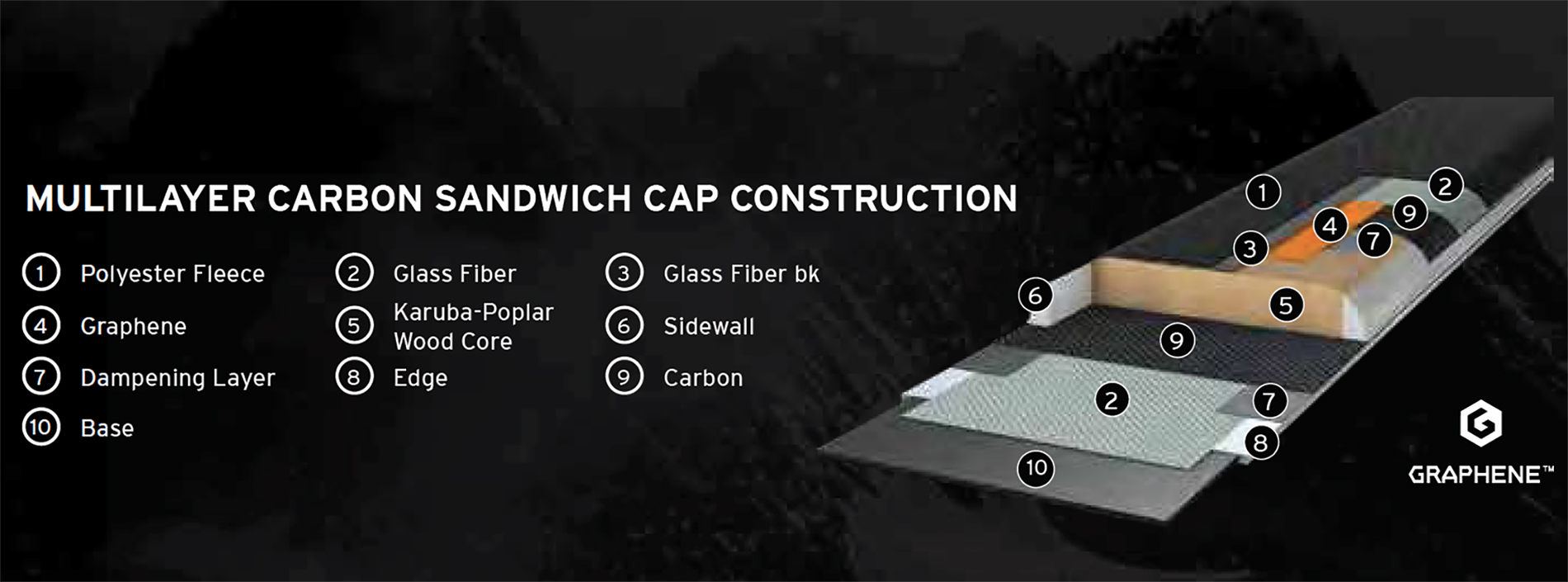
First, the latest Kore skis now come with a karuba / poplar wood core, whereas the previous skis were reportedly purely karuba. The older Kore skis also featured honeycomb Koroyd inserts (similar to what’s used in many Smith helmets), but the 21/22 models did not.
The 21/22 Kore skis still featured a layer of Graphene at the tip and tail and a pseudo top sheet that’s essentially a layer of polyester “fleece” that’s laminated to the ski. The 21/22 versions also got two layers of carbon fiber (reportedly one more layer than the previous skis), along with a more traditional fiberglass laminate. When mounting the 21/22–22/23 Kore skis we have, we also noticed that they feature a layer of metal around the bindings, assumingly for better screw retention.
While they still feature what I’d call a full sidewall construction, the latest Kore skis do feature a “chamfered top edge,” which basically just means that the top of the sidewall is angled / rounded, rather than being a 90° angle. This construction could be described as “semi-cap,” in that there is a sidewall running the length of the ski, but the top sheet folds over it, particularly around the middle of the ski. This should help reduce top sheet chipping, and Head also says “more chamfer = more playful.” We shall see about that.
For 22/23, Head opted for a more traditional, matte-finish top sheet material for increased durability. We’ve been A/B testing several 21/22 vs. 22/23 Kore models and haven’t yet been able to notice an on-snow performance difference, and their measured specs are extremely similar.
Lengths
Another big change for 21/22 was the sizing options for the new Kore skis. The previous versions had some pretty big gaps between sizes, but the new skis are offered in more sizes with smaller, 7-cm gaps between lengths. Here’s the rundown on the 21/22–22/23 Kore length options:
- Kore 85 W: 149, 156, 163, 170 cm
- Kore 87: 149, 156, 163, 170, 177, 184, 191 cm
- Kore 91 W: 149, 156, 163, 170 cm
- Kore 93: 149, 156, 163, 170, 177, 184, 191 cm
- Kore 97 W: 156, 163, 170, 177 cm
- Kore 99: 149, 156, 163, 170, 177, 184, 191 cm
- Kore 103 W: 163, 170, 177 cm
- Kore 105: 163, 170, 177, 184, 191 cm
- Kore 111: 177, 184, 191 cm
- Kore 117: 177, 184, 191 cm
Shape / Rocker Profile
Alright, now onto the Kore 111 in particular.
Overall, this new ski looks very similar to the skis that sit on either side of it in the line, the Kore 105 and Kore 117. Like the old and new versions of those skis, the Kore 111 features a significantly tapered tip / shovel and a notably less tapered tail (the shape and rocker profiles of the Kore skis have not changed much, if at all).
Also like those other skis, the Kore 111 has pretty shallow rocker lines for a ski of its width. It definitely has tip and tail rocker (and lots of camber through the rest of the ski), but the Kore 111’s rocker lines are notably shallower than skis like the K2 Mindbender 108Ti, Nordica Enforcer 110, and Moment Deathwish.
Flex Pattern
Here’s how we’d characterize the flex pattern of the Kore 111:
Tips: 9
Shovels: 8.5-9
In Front of Toe Piece: 9-9.5
Underfoot: 9.5
Behind the Heel Piece: 9.5
Tails: 8.5-9
One of the other changes that Head highlighted with the 21/22 Kore skis was that the wider models (103 W, 105, 111, & 117) are now reportedly softer and more playful than the narrower, firmer-snow-oriented models.
And flexing our pairs of all the new Kore skis, that seems true, though the difference is quite subtle. The previous Kore skis were nearly unbendable when hand-flexing them. The 21/22–22/23 Kore 103 W, 105, 111, and 117 are still very, very stiff skis, though their shovels and tails are a touch easier to bend than the narrower models, and the previous iterations of the skis.
Still, all of the new Kore skis are still some of the stiffest options in their respective categories. As you can see in those numbers above, the Kore 111 is not even close to what I’d call “soft” at any point along the length of the ski.
Mount Point
The 21/22 Kore 111, like the previous Kore skis, has a traditional, rearward mount point of about -9.2 cm behind the true center of the ski. Our pair of the 22/23 Kore 111 has a slightly different recommended mount point, at about -8 cm from true center, though it also has one line a cm in front of the main line, and three behind it.
The Kore 111’s recommended line is still very much in the directional / traditional category, but maybe this is another way that Head is aiming to make the wider skis a touch more playful, especially considering that they have some really talented freestyle skiers on their team who are frequently throwing tricks on the Kore 111 and Kore 117.
Weight
As we noted above, the original Kore skis were some of the lightest non-touring skis we’d ever tested. So how about the current models?
Well, they got even lighter.
Our pair of the 184 cm Kore 111 is coming in at about 1868 grams per ski. That’s lighter than a lot of the skis in the “50/50” (backcountry / resort) category of our Winter Buyer’s Guide, and even some of the skis in our dedicated Backcountry Touring category. While the Kore 111 is a new model, the returning 21/22 and 22/23 Kore models are also notably lighter than the 20/21 versions.
For reference, here are our measured weights for some notable skis. Keep in mind the length differences to try to keep things apples to apples.
1800 & 1804 Head Kore 105, 184 cm (21/22)
1806 & 1862 Armada Tracer 108, 180 cm (19/20–21/22)
1820 & 1821 Majesty Havoc, 186 cm (20/21–21/22)
1833 & 1894 Head Kore 111, 184 cm (22/23)
1850 & 1886 Head Kore 111, 184 cm (21/22)
1863 & 1872 Atomic Bent 110, 188 cm (22/23)
1875 & 1881 Line Sir Francis Bacon, 184 cm (19/20–22/23)
1895 & 1906 Folsom Trophy Carbon, 188 cm (18/19–21/22)
1905 & 1919 J Skis Slacker, 188 cm (20/21–21/22)
1919 & 1923 Head Kore 117, 184 cm (21/22)
1920 & 2006 RMU North Shore YLE 110, 186 cm (21/22)
1947 & 2011 4FRNT Devastator, 186 cm (20/21–21/22)
1951 & 1953 Elan Ripstick 106, 188 cm (20/21–22/23)
1951 & 1957 RMU Apostle 3.0 106 Wood, 184 cm (21/22)
1964 & 1972 Moment Deathwish, 184 cm (19/20–20/21)
1970 & 1973 4FRNT Renegade, 184 cm (20/21–21/22)
1970 & 1993 Moment Deathwish 104, 184 cm (21/22)
1993 & 2026 Black Crows Atris, 184.2 cm (19/20–21/22)
2006 & 2065 Head Kore 105, 189 cm (19/20–20/21)
2008 & 2065 Wagner Summit 106, 186 cm (20/21–21/22)
2011 & 2028 Moment Wildcat 108, 184 cm (19/20–20/21)
2011 & 2046 Elan Ripstick 106 Black Edition, 188 cm (21/22–22/23)
2027 & 2052 K2 Reckoner 112, 184 cm (20/21–22/23)
2034 & 2052 Blizzard Rustler 11, 188 cm (17/18–21/22)
2046 & 2120 Black Crows Corvus, 188 cm (18/19–21/22)
2060 & 2075 4FRNT Hoji, 184 cm (21/22)
2096 & 2100 Salomon QST 106, 181 cm (19/20–21/22)
2110 & 2119 Moment Wildcat 108, 190 cm (19/20–20/21)
2112 & 2125 4FRNT MSP 107, 187 cm (18/19–21/22)
2116 & 2181 Faction Dictator 3.0, 188 cm (19/20–21/22)
2145 & 2167 Sego Big Horn 106, 187 cm (20/21)
2153 & 2184 Rossignol BLACKOPS Sender Ti, 187 cm (20/21–21/22)
2165 & 2211 K2 Mindbender 108Ti, 186 cm (19/20–21/22)
2165 & 2219 Icelantic Nomad 105, 191 cm (19/20–20/21)
2170 & 2180 Dynastar M-Free 108, 182 cm (20/21–21/22)
2182 & 2218 Nordica Enforcer 110 Free, 185 cm (17/18–22/23)
2228 & 2270 Sego Comp 110, 187 cm (20/21–21/22)
2232 & 2242 Blizzard Cochise 106, 185 cm (20/21–21/22)
2243 & 2287 Salomon QST Blank, 186 cm (21/22-22/23)
2295 & 2344 J Skis Hotshot, 183 cm (20/21–21/22)
2302 & 2342 Dynastar M-Free 108, 192 cm (20/21–21/22)
2312 & 2386 Prior Husume, 188 cm (17/18–21/22)
2353 & 2360 Volkl Katana 108, 184 cm (20/21–21/22)
2449 & 2493 J Skis Hotshot, 189 cm (20/21–21/22)
Bottom Line (For Now)
With their 21/22 Kore skis, Head has maintained much of what made the original versions stand out in the market, but these new skis might have even more eye-catching specs than their predecessors. We’re very curious to see how all of these new Kore skis compare to the current crop of all-mountain and freeride skis, and are especially eager to test the new Kore 111 against some other options in its class.
Blister Members can read our Flash Review linked below for our initial thoughts on the Kore 111, and then stay tuned for more in-depth reviews next season once we’ve spent more time on the new Kore skis.
Flash Review
Blister Members can read our Flash Review of the Kore 111 for our initial on-snow impressions. Become a Blister member now to check out this and all of our Flash Reviews, plus get exclusive deals and discounts on skis, and personalized gear recommendations from us.
FULL REVIEW
Powder
Dylan Wood (5’10”, 155 lbs / 178 cm, 70 kg): I spent a few days on the Kore 111 during our late December and early January storm cycle, so I got to enjoy plenty of powder on this ski. I found that it floats well for its width, and gets along best with an aggressive, dynamic, directional style in powder.
This ski isn’t very rockered and its tips are very stiff, too. Because of this, its tips don’t exactly want to rise to the top of the snow; rather, I found that its rearward mount point comes in handy here as it puts a lot of this stiff ski out in front of your boots to still allow for a forward stance and directional style in powder. I’d say this ski has pretty average flotation overall for a ~110 mm ski, and speed is definitely your friend in keeping it afloat. I don’t think this is the best ski for people who like to slarve, drift, and slash their way through powder. Instead, this ski felt best pointed mostly down the fall line, taking advantage of its low weight by skiing with a more dynamic style, getting it airborne and making jump turns often. Using this technique inn powder, the Kore 111 can be skied quite hard by directional skiers.
Luke Koppa (5’8”, 155 lbs / 173 cm, 70 kg): I agree with pretty much everything Dylan said. My first days on the Kore 111 were during a random foot+ storm in May of 2021, and I was impressed by both its flotation and stability in soft snow.
I agree that this isn’t a ski that instantly rises to the top of deep snow at slow speeds, but I don’t think I ever felt the sensation of the Kore 111’s tips “diving” on me. Especially once you get it pointed down the fall line, I think the Kore 111 floats quite well for its width. If, however, you’re looking for more of a surfy, maneuverable pow ski, then I’d point you toward something more rockered, tapered, and softer, such as the Atomic Bent 110 or RMU YLE 110.
But if I kept some speed going, the Kore 111 floated quite well and I want to reiterate Dylan’s point about the Kore 111 encouraging an aggressive but dynamic style. Its rearward mount point + stiff flex pattern create a lot of support in front of my boots, meaning I can drive the Kore 111 hard through both powder and chop. At the same time, it’s also quite light and easy to flick and tweak in the air, which encourages what I basically describe as a “bouncy” style in powder — catch some air, drive the ski back into the snow, and pop back out.
Soft Chop
Dylan: The Kore 111 continues to encourage and reward a directional skiing style in chop. While the Kore 111 isn’t a heavy ski, it is a very stiff one. Heavier (but still directional) skis like the Sego Comp 110 can let you get away with a more centered, casual stance, letting the ski’s mass plow through chop, while the Kore 111 needs to be deliberately driven through the shovels, allowing its stout tips to cut through chop. This ski continues to feel nimble, quick, and powerful through chop, it just requires a bit of aggression and attention to keep it from getting thrown around.
Luke: Totally agree. For technically strong skiers with good form, the Kore 111 can be skied surprisingly hard, given how light it is. But as Dylan said, this isn’t a ski that just lets you chill out and have the ski blow through chopped-up snow for you. If I ski the Kore 111 very centered (or backseat) in choppy conditions, it gets deflected quite a bit. But if I instead focus on powering it through those piles of snow, it offers a very impressive level of composure in chop.
On that deep day last May, I was A/B testing the Kore 111 vs. the RMU YLE 110, and the Kore 111 was notably more stable at speed in chopped-up snow. However, when I was tired at the end of the day and skiing a bit more lazily, or when I encountered firmer, more set-up snow, the YLE 110 offered a notably more damp, easy-going ride.
So if you want a ski that blows through chop on its own and lets you ski with a relaxed, centered style, you’ll be much better off on something heavier, softer, and more forward mounted. But if you want a ski that’s both very nimble and capable of blasting through chop — as long as you’re also up to the task — the Kore 111 could be an excellent ski for you.
Firm Chop / Crud
Dylan: There’s no getting around the fact that this lightweight ski does not have very good suspension. In firm chop and crud, it has a pretty harsh and unforgiving feel. While this ski should not be on the list of anyone looking for something very damp that feels smoooth / planted in rough and variable crud, as long as you stay forward and keep your speed under control, the Kore 111 can be piloted elsewhere to better, softer snow.
Luke: Yep, especially in crud that’s fairly big / deep (say, Grapefruit-size chunks or bigger), the Kore 111 can feel like a handful. Yes, it’s light and easy to flick around. But it also gets deflected quite easily by those big chunks, especially if you’re not actively driving its shovels.
That said, I have been impressed by the suspension of the Kore 111 (and other Kore skis) in what I guess would be described as “shallow crud.” It gets knocked around a lot in deeper chop and crud, but it feels impressively planted for its weight when conditions are somewhat inconsistent but you’re not hitting a lot of big chunks / patches (think end-of-day groomer conditions, or the end of a <4” pow day). Still, this wouldn’t be my top pick if you plan on skiing a lot of rough, variable snow and want a ski that does a great job of smoothing it out for you.
Moguls, Trees, & Tight Terrain
Dylan: This is where I think the Kore 111 shines, so long as the snow is somewhat soft. This ski is easy to flick around, launch into the air, and ski with a light-on-your-feet, dynamic style through tight terrain.
With a directional style and forward stance, the Kore 111 feels very quick and is a blast to make lots of tight turns on through bumps and trees. The Kore’s low weight really encourages that you get it into the air often, and its tails are fairly poppy and definitely aid in getting the ski airborne. I still don’t think this ski is very forgiving in tight terrain; get backseat, and the tails of this ski will quickly remind you of how stiff they are. It also isn’t the loosest, either; it requires deliberate effort and weight on its shovels to break its tails free. However, the Kore 111 is a great tool for quick, dynamic, edge-to-edge skiing.
Luke: Totally agree. Especially in somewhat soft snow, the Kore 111 feels very agile and pretty easy to release as long as you’re not backseat. Try to ski it totally centered or get back over the tails, and it becomes more punishing and difficult to turn. But for skiers with pretty good technique, the Kore 111 offers the low swing weight and supportive flex pattern to encourage an aggressive but dynamic style.
Groomers
Dylan: The Kore 111 requires a lot of speed and some real estate to be enjoyed on groomers. Despite a moderate stated sidecut radius of 21.2 meters, this ski feels pretty limited to longer GS and Super G turns. Its edge hold is good for its class, but it is just so stiff that it is very hard for me to bend it into anything tighter than its radius would allow. I could see talented ex-racers enjoying this ski in the right groomed snow conditions, but I think most skiers are going to find this ski pretty uninspiring on piste.
Luke: Agreed. Personally, I found the Kore 111 pretty boring on groomers. Predictable? Totally. Just not very engaging, and that’ll be totally fine for a lot of people — it’s a 111mm-wide ski, after all. The stronger and more aggressive the skier, the more I think you’ll enjoy the Kore 111 on piste. But when I was skiing it on groomers, I always felt like the Kore 111 was just asking me “this is fine and all, but when are we getting back into the steep off-piste terrain?”
Mount Point
Dylan: I skied the Kore 111 mounted on the line (-9.2 cm from true center on our 21/22 pair) as well as mounted 2 cm forward of this line (or -7.2 cm from true center). And while I often find myself enjoying skiing directional, traditionally mounted skis around 2 cm forward of their recommended lines, I actually found myself enjoying the -9.2 cm line on the Kore 111 the most.
This ski is just so stiff and driveable with a forward stance, and I wasn’t finding myself really gaining anything by mounting forward. It felt even more demanding since I had even more stiff tail behind me, and while it felt a hair more balanced, I didn’t struggle with feeling like this lightweight ski was not balanced in the air in the first place.
Luke: I also tried the Kore 111 at mount points ranging from about -9 to -7 cm from true center. I’m in a similar boat as Dylan in terms of often preferring skis with more traditional mount points (say, -9 cm or farther back) with the bindings pushed a bit forward of those lines. And personally, I ended up preferring it mounted around -8 cm from true center (+1 cm from the 21/22 line, and about the same as the 22/23 line).
At -8 cm, I felt like I didn’t lose any support from the front of the ski, but when needed, I could ski it a touch more centered in steep terrain (basically, pushing down through the ball of my foot a bit more, rather than aggressively driving with my shins). It does create a bit more (stiff) tail, but I didn’t find it as punishing at -8 as I did at -7.
Overall, though, the Kore 111 feels like a very directional ski that wants to be skied with lots of pressure on its shovels. If you want a balanced, surfy, playful freestyle ski, you’ve got lots of better options (despite the fact that some of the best backcountry freestyle skiers in the world are on the Kore 111).
Who’s It For?
Dylan: Directional skiers who value a stiff and lightweight ski. The Kore 111 is especially accomodating to an aggressive, dynamic style, since it is very easy to get into the air and make jump turns on, but also very supportive. I also think it is a pretty compelling 50/50 backcountry / resort option for seeking out soft snow. Skiers looking for something forgiving, playful, and/or loose have better options, and the Kore 111 certainly isn’t the best tool for firm, crappy snow, either. But if you rarely get backseat and really like to drive the shovels of your skia, the Kore 111 offers a lot to like in a lightweight package.
Luke: Agreed.
Bottom Line
The Head Kore 111 is a lightweight, strong ski that can be skied very aggressively in soft snow for how little it weighs. It’s not a very damp or forgiving ski, but technically proficient directional skiers could come to love its rare combination of agility and support.
Deep Dive Comparisons
Become a Blister Member or Deep Dive subscriber to check out our Deep Dive comparisons of the Kore 111 to see how it compares to the Head Kore 105, Head Kore 117, Atomic Bent 110, 4FRNT Hoji, Salomon QST Blank, Line Vision 118, Black Crows Anima, J Skis Friend, RMU North Shore YLE 110, K2 Reckoner 112, Moment Deathwish, Blizzard Rustler 11, Sego Comp 110, Dynastar M-Free 108, Icelantic Nomad 105, Nordica Enforcer 110, J Skis Slacker, and WNDR Alpine Intention 110.



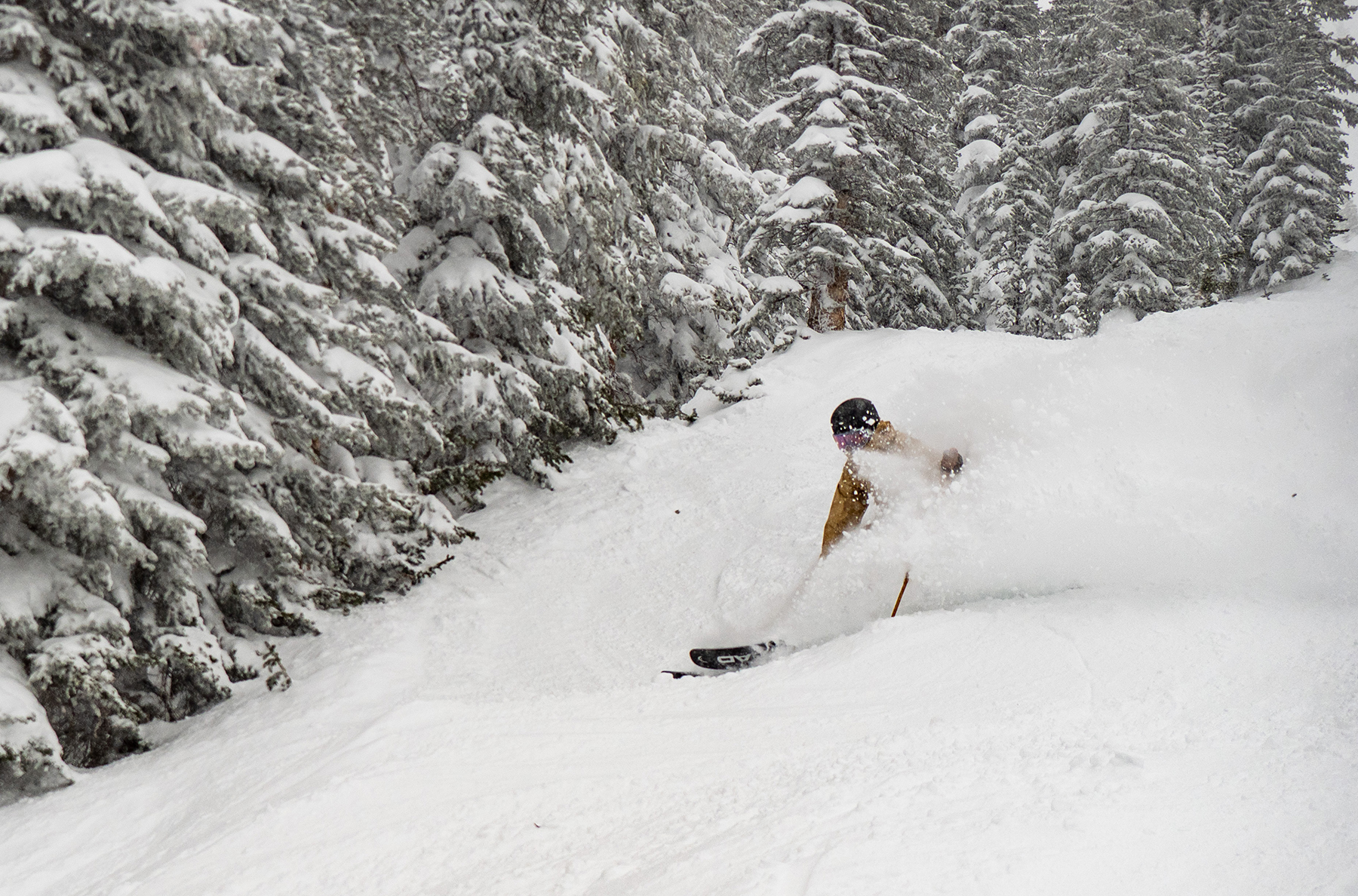
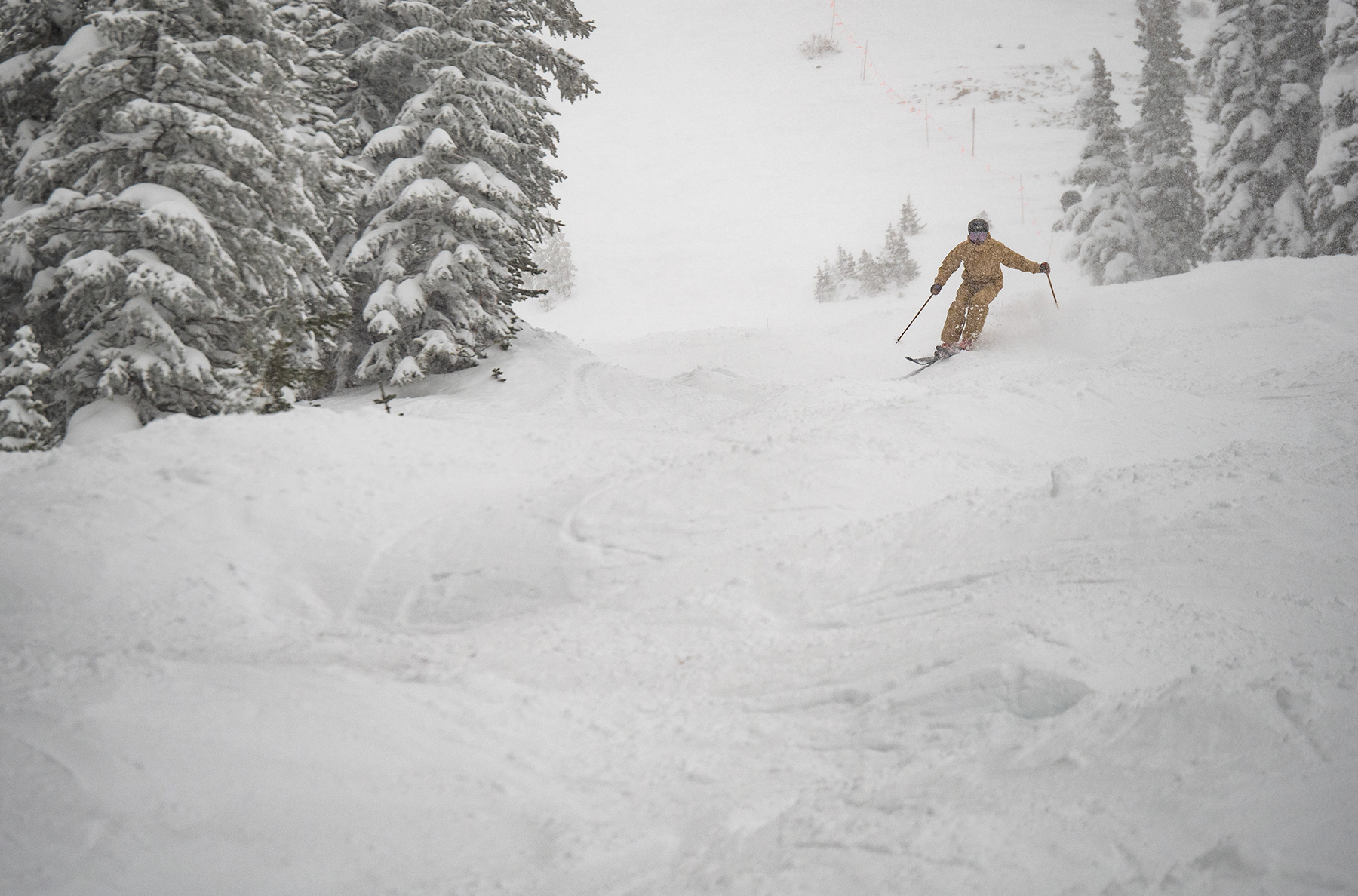
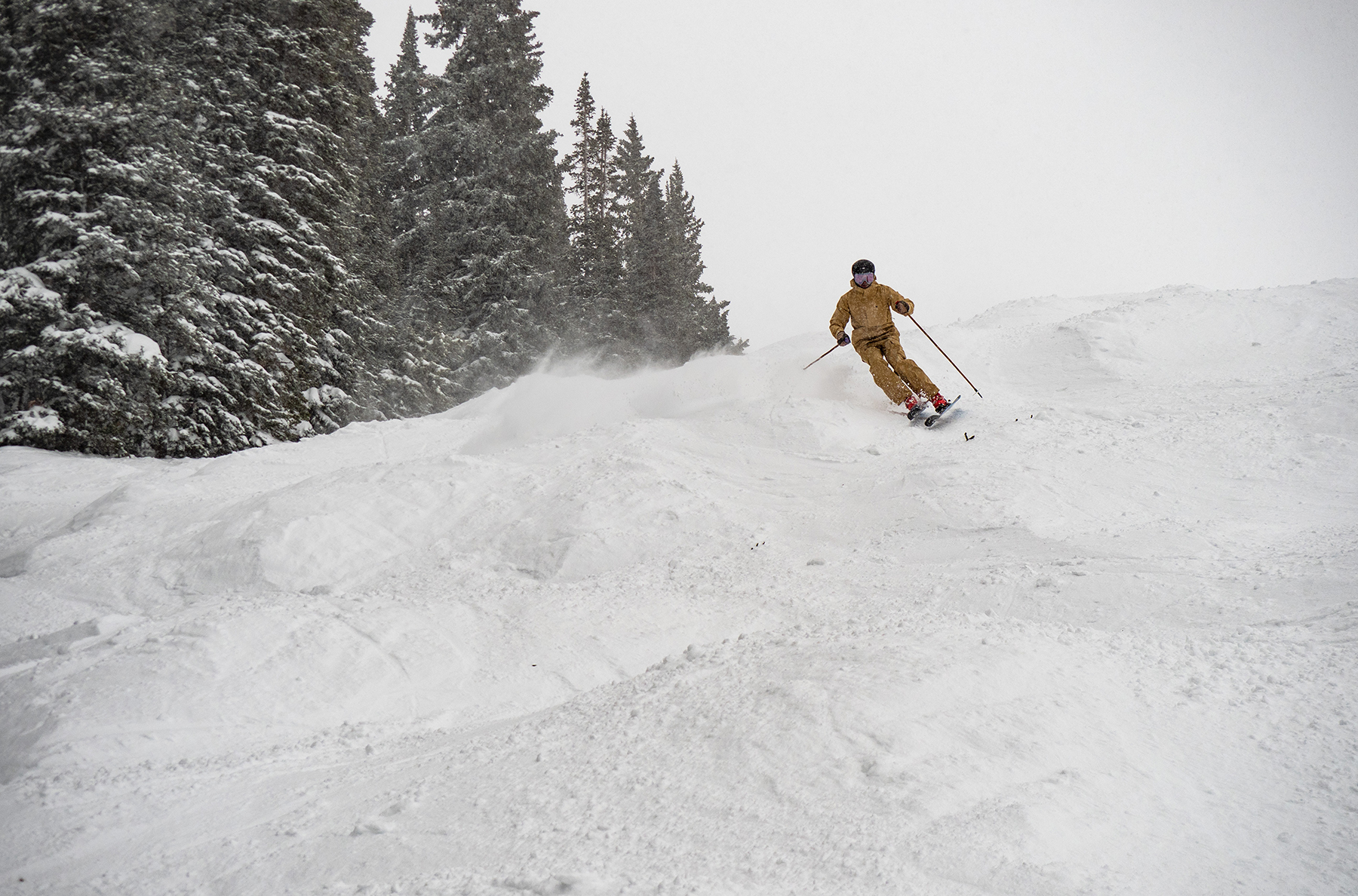
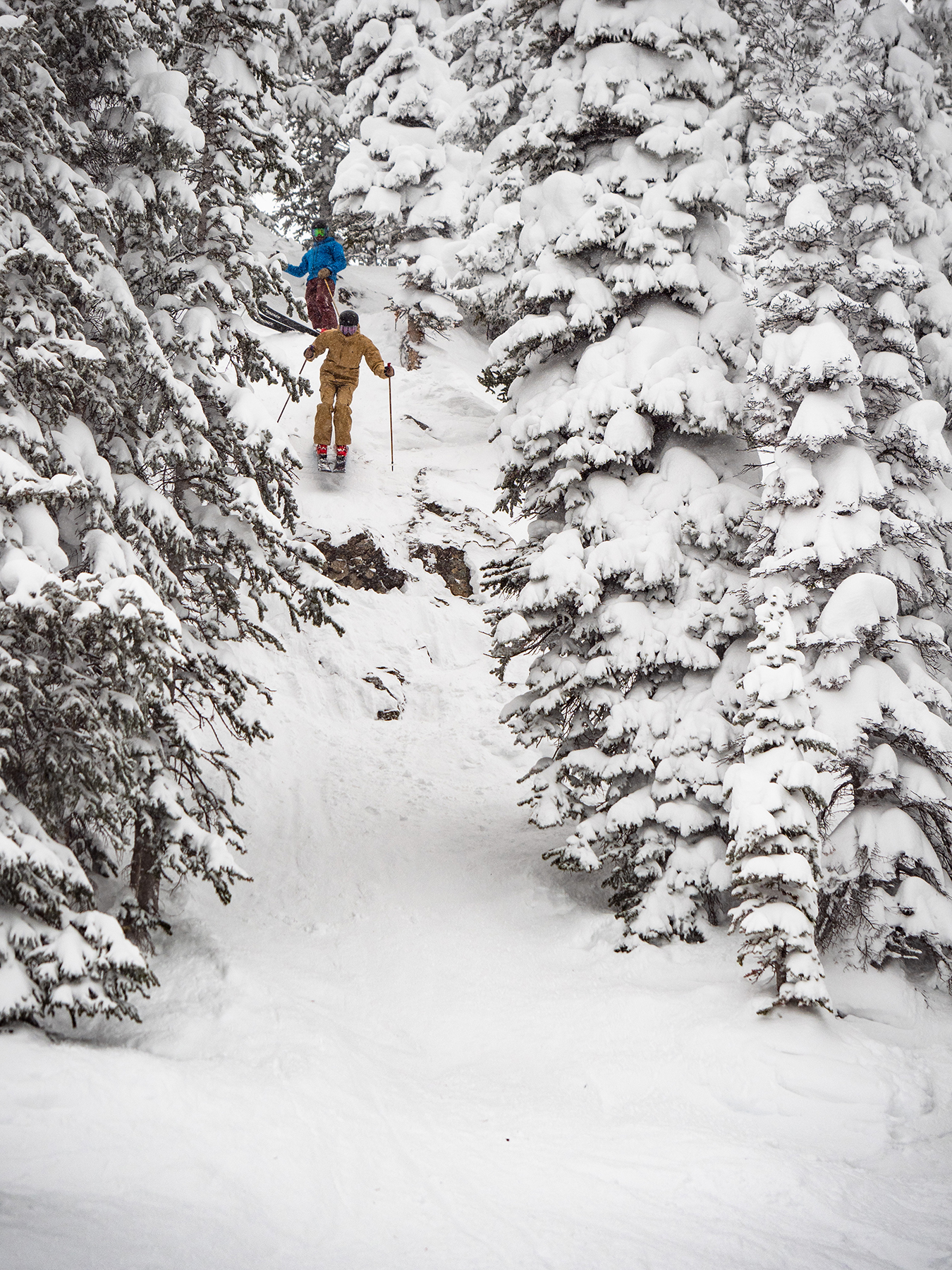
Baker. Boyd. Give the guy a pro model!
Would love to see more pros showing/producing content of them slaying inbounds. If you ski Aspen, you know the Freaks and you know that Baker skis inbounds (and everything else) at an unreal level.
When are they coming out with the 86, 92, 95, 98, 101, 104, 108, and 114? There seems to be some holes in the lineup.
Sorry for the sarcasm. I just really want to know when Head is going to start making Monsters again.
Yes! I bought a secondhand pair of 2016/17 Monster 88’s this season (€90!), bit banged up on top, but edges and bases are fine. Really enjoy them and am not sure what I would eventually replace them with. Certainly don’t see a Head ski that fits the bill.
I wish they would, I miss the old Monsters. I haven’t bought a pair of HEAD skis since they dropped those. Everything about the Kore 111s looks great, except it weighs a full pound per ski less than what I’m looking for.
Shame the Kore 111 starts at 177cm, a shorter length for smaller skiers would have been nice.
This
All these videos show the skiers having fun in powder. Great, a lot of skis can do that. I wanna see how the skis handle chunked out resort conditions, that’s what really impresses me.
Velo, take a look at what Carl Regnér does with the 111’s i Åre.
I am 190cm tall and 78kg heavy, and I think I can say, that I am a quite good skier who is rarely backseat. I want a ski, which is mainly playful but also stable at higher speeds.
Would you recommend me the Kore m in 191 or 184?
Thanks and regards from Autstria
176cm, 69kg expert skier who wants directional feel in a sidecountry ski. 177 or 184cm?
I’m getting the Kore 93 in 177 for my all mountain, crud, tree ski.
I have the e-Race Pro for carvers.
Thanks!
Tough call, but if you like the 177 Kore 93 all over the mountain, I’d probably lean toward the 184 cm Kore 111, since it does feel notably more maneuverable than the Kore 93, and I’d probably take the extra float of the 184 over the extra maneuverability of the 177 in your case.
Hey guys, thanks for the review! A fresh pair of Kore 111 (23/24) showed up in my living room somehow, and I’m just scratching my head looking at all these mount points. I have a pair of 105s (21/22) mounted on the factory line and love them that way, but I generally prefer traditionally mounted skis. These 111s will be my main backcountry powder touring ski. Do you have any thoughts on the mount point? I’m thinking factory line or 1 cm back for better flotation. Thoughts?